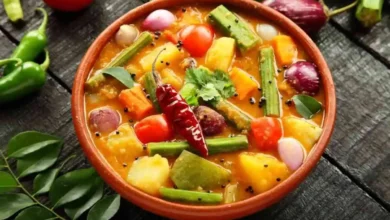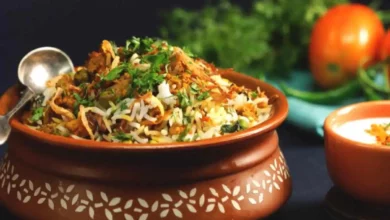10 Irresistible Indian Breakfast Dishes: Spice Up Your Mornings

Introduction
Indian cuisine is renowned for its flavors and variety, and breakfast is no exception. A delectable assortment of breakfast dishes awaits those who explore the rich tapestry of Indian morning meals. In this article, we will delve into ten irresistible Indian breakfast dishes that will undoubtedly spice up your mornings. Whether you prefer something spicy, savory, or sweet, there’s something for every palate.
Table of Contents
Poha – A Fluffy Morning Delight
Poha, a staple breakfast in many Indian households, offers a delightful blend of textures and flavors. It is made from flattened rice and is a quick and easy dish to prepare. To make Poha, you’ll need:
- Flattened rice
- Oil, mustard seeds, cumin seeds
- Peanuts, curry leaves, green chilies
- Turmeric, salt, and lemon juice

How to Prepare Poha:
- Start by rinsing the flattened rice and letting it soak for a few minutes.
- In a pan, heat some oil and add mustard and cumin seeds.
- Add peanuts, curry leaves, and green chilies for a flavorful kick.
- Stir in turmeric, salt, and a dash of lemon juice.
- Finally, add the soaked flattened rice and mix everything together.
Poha comes in various regional variations, each with its own special touch, so you can customize it to your taste.
Masala Dosa – South India’s Special
Masala Dosa is a beloved South Indian classic that’s crispy on the outside and soft on the inside. It’s essentially a rice and lentil crepe filled with a spiced potato mixture. To make Masala Dosa, you’ll need:
- Dosa batter
- Boiled and spiced potatoes
- Oil, mustard seeds, and curry leaves
Preparing Masala Dosa:
- Heat a non-stick pan and pour a ladle of dosa batter.
- Spread it in a circular motion to create a thin crepe.
- Add the potato filling, fold the dosa, and serve hot with coconut chutney and sambar.
Masala Dosa’s unique taste and texture make it a favorite Indian breakfast choice.
Upma – The Nutrient-packed Breakfast
Upma is a wholesome South Indian breakfast dish made from semolina and an array of spices and vegetables. It’s both nutritious and delicious. To make Upma, you’ll need:
- Semolina
- Ghee or oil
- Mustard seeds, urad dal, and chana dal
- Onions, green chilies, and vegetables
- Cashews, curry leaves, and water

How to Cook Upma:
- Roast the semolina until it turns golden.
- In a pan, heat ghee or oil, add mustard seeds, urad dal, and chana dal.
- Sauté onions, green chilies, and your choice of vegetables.
- Add cashews and curry leaves for extra flavor.
- Stir in water and simmer until the mixture thickens.
Upma is not only flavorful but also packed with essential nutrients, making it a perfect Indian breakfast choice.
Idli-Sambhar – South Indian Comfort Food
Idli-Sambhar is a classic South Indian breakfast combo known for its comfort and simplicity. It consists of fluffy, steamed rice cakes (idlis) served with a flavorful lentil soup (sambhar). To make this delightful duo, you’ll need:
- Idli batter
- Toor dal, vegetables, and tamarind
- Spices and seasonings
Making Idli-Sambhar:
- Pour the idli batter into greased molds and steam until they’re soft and spongy.
- For sambhar, cook toor dal with vegetables and tamarind extract.
- Add a blend of spices and seasonings to create a savory sambhar.
Idli-Sambhar is more than just a Indian breakfast; it’s a comforting culinary experience.
Aloo Paratha – North India’s Stuffed Wonder
Aloo Paratha is a North Indian delight, consisting of unleavened bread stuffed with a spiced potato mixture. It’s a hearty breakfast option. To prepare Aloo Paratha, you’ll need:
- Whole wheat flour
- Potatoes, spices, and herbs
- Ghee or oil
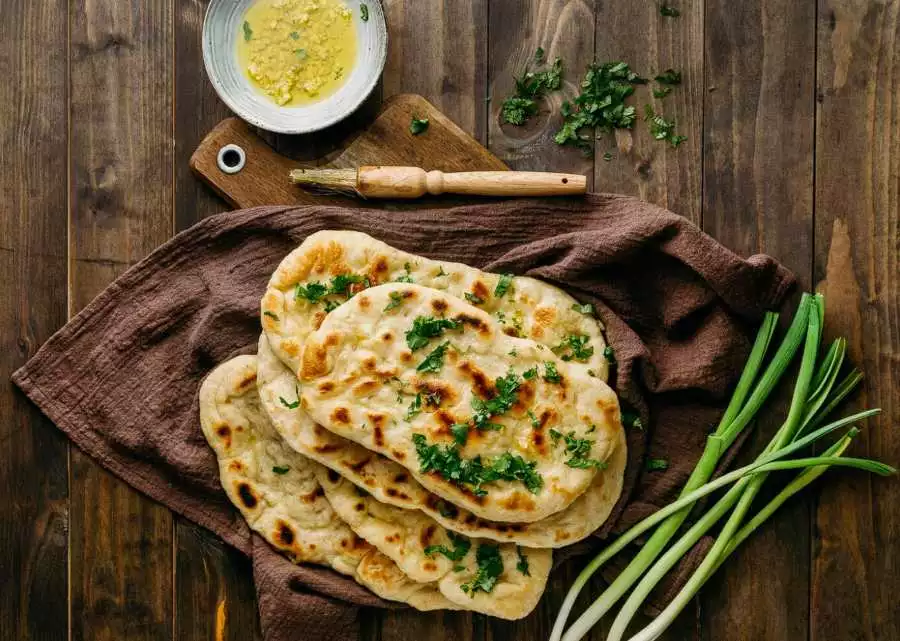
Making Aloo Paratha:
- Knead the wheat flour into a soft dough.
- Prepare the spicy potato filling by mashing potatoes with spices and herbs.
- Roll out the dough, stuff it with the potato mixture, and cook on a hot griddle.
- Serve with yogurt, pickle, or butter.
Aloo Paratha is the ultimate comfort food for a North Indian breakfast.
Dhokla – The Gujarati Delight
Dhokla is a light and fluffy steamed snack hailing from Gujarat. It’s a perfect breakfast option for those looking for something light and delicious. To make Dhokla, you’ll need:
- Besan (gram flour)
- Yogurt, green chilies, and ginger
- Baking soda and lemon juice
Preparing Dhokla:
- Mix besan, yogurt, green chilies, and ginger to create the batter.
- Add baking soda and lemon juice for fluffiness.
- Steam the batter until it’s cooked through.
Dhokla is often served with green chutney and tempered with mustard seeds and curry leaves in Indian Breakfast.
Medu Vada – Crispy South Indian Delight
Medu Vada is a savory South Indian snack that’s crispy on the outside and soft on the inside. It’s a popular breakfast item, especially in South India. To make Medu Vada, you’ll need:
- Urad dal
- Spices and herbs
- Oil for frying
Making Medu Vada:
- Soak and grind urad dal to create a smooth batter.
- Add spices and herbs for flavor.
- Shape the batter into donuts and deep fry until golden brown.
Medu Vada is best enjoyed with coconut chutney and sambar in Indian Breakfast.
Aloo Puri – North Indian Soul Food
Aloo Puri is a North Indian favorite that combines spicy potato curry with deep-fried, puffed bread (puri). It’s a hearty and indulgent breakfast option. To make Aloo Puri, you’ll need:
- Whole wheat flour
- Potatoes, spices, and herbs
- Oil for deep frying
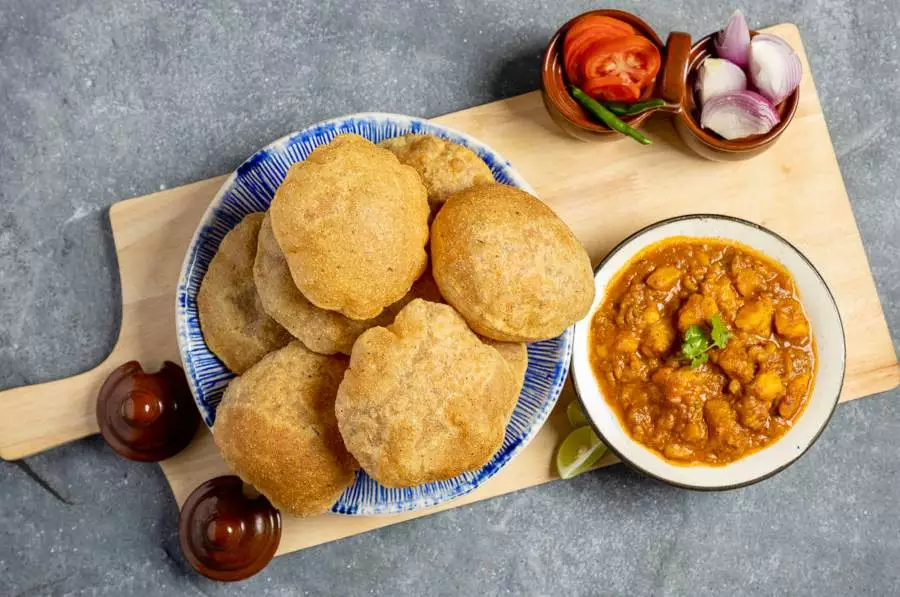
Preparing Aloo Puri:
- Knead the wheat flour into a soft dough.
- Cook a spiced potato curry.
- Roll out the dough, deep-fry the puris, and serve them with the potato curry.
Aloo Puri is a satisfying Indian breakfast choice for those who crave North Indian flavors.
Chole Bhature – The Flavorful Combo
Chole Bhature is a North Indian specialty that combines spicy chickpea curry (chole) with deep-fried bread (bhature). It’s a flavorful and satisfying breakfast. To make Chole Bhature, you’ll need:
- Chickpeas, spices, and herbs
- All-purpose flour, yogurt, and baking soda
- Oil for frying
Making Chole Bhature:
- Cook chickpeas with a blend of spices and herbs.
- Prepare the bhature dough by mixing all-purpose flour, yogurt, and baking soda.
- Roll out the dough and deep-fry the bhature.
Chole Bhature is a hearty Indian breakfast that’s bursting with flavor.
Uttapam – South Indian Savory Pancakes
Uttapam is a South Indian favorite, resembling savory pancakes with a variety of toppings. It’s a versatile and customizable breakfast dish. To make Uttapam, you’ll need:
- Dosa batter
- Onions, tomatoes, and green chilies
- Spices and seasonings
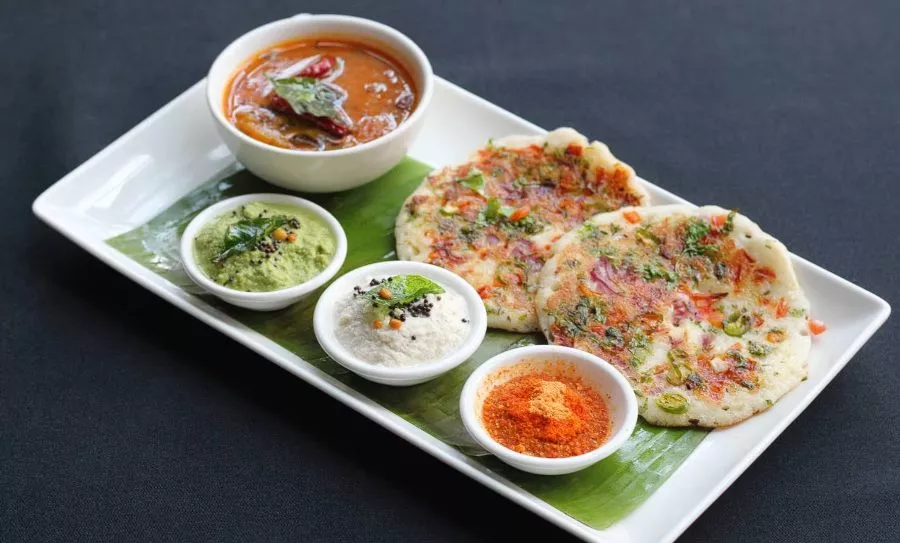
How to Prepare Uttapam:
- Pour dosa batter onto a hot griddle.
- Add finely chopped onions, tomatoes & green chilies.
- Sprinkle spices and seasonings on top.
- Cook until the uttapam is crispy and golden.
Uttapam is often served with coconut chutney or tomato sauce.
Conclusion
Indian breakfast dishes are a celebration of flavors, textures, and cultural diversity. From the spicy warmth of Aloo Paratha to the comforting simplicity of Idli-Sambhar, there’s a breakfast dish for every mood. Embrace the variety and spice up your mornings with these irresistible Indian breakfast options.
FAQs:
Q1. Are Indian breakfast dishes spicy?
Indian breakfast dishes can range from mild to very spicy, depending on your personal preference. You can always adjust the spice level as per your taste.
Q2. Can I find these dishes in restaurants outside of India?
Yes, many Indian restaurants around the world offer these dishes, allowing you to enjoy the authentic flavors.
Q3. How can I make these breakfasts healthier?
You can make these dishes healthier by using whole grains, less oil, and incorporating more vegetables in the recipes.
Q4. What are some common variations of these dishes?
Indian breakfast dishes have numerous regional variations. For example, Poha can be made with different ingredients in different regions.
Q5. Which dish is the easiest to prepare for beginners?
Upma and Uttapam are relatively easier to prepare for beginners, as they require minimal cooking skills and readily available ingredients.
Related Articles
Indian Food – A Comprehensive guide
Indian Cuisine – An Aromatic Speciality
Indian Restaurants – Where and What To Eat
10 OF the Most Popular Indian Foods to try
Indian Dinner Recipes – What do Indians have for dinner ? Popular 8 Dinner Dishes

